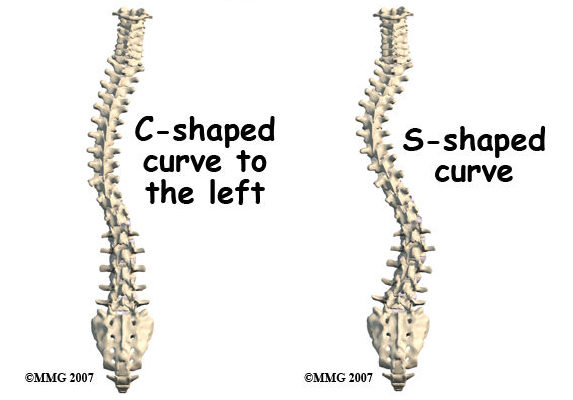Scoliosis is a medical condition characterized by an abnormal curvature of the spine, which can range from mild to severe. Approximately 2-3% of the population is affected by scoliosis, with females being more commonly affected than males. The curvature of the spine can form an “S” or “C” shape and can occur in different parts of the spine. Mild scoliosis is generally defined as a curvature of less than 20 degrees.

障害の定義
To determine whether mild scoliosis is considered a disability, it’s essential to understand the definition of disability. According to the Americans with Disabilities Act (ADA), a disability is a physical or mental impairment that substantially limits one or more major life activities, such as walking, standing, lifting, and bending.
Is Mild Scoliosis a Disability?
The classification of mild scoliosis as a disability varies based on individual circumstances. Typically, mild scoliosis does not cause significant functional limitations or affect daily activities. However, in some cases, mild scoliosis may result in limitations that meet the criteria for disability.
Assessing Disability Status
Determining disability status often requires a medical evaluation. This evaluation includes a comprehensive review of the individual’s medical history, physical examination, and potentially imaging tests like X-rays or MRI scans. The goal is to assess the severity of scoliosis and its impact on daily activities and functional abilities.

Medical Evaluation for Scoliosis
A medical evaluation for scoliosis involves measuring the curvature using the Cobb angle method. Mild scoliosis is defined as a curvature of less than 20 degrees, moderate scoliosis ranges from 20 to 40 degrees, and severe scoliosis is a curvature of 40 degrees or more. This measurement helps determine the severity of scoliosis and guides treatment options.
Functional Limitations and Mild Scoliosis
Although mild scoliosis generally does not cause significant functional limitations, some individuals may experience discomfort or pain, particularly during certain activities or extended periods of sitting or standing. This discomfort can affect their ability to perform specific tasks or participate in physical activities.
Impact on Daily Activities
The impact of mild scoliosis on daily activities can vary widely. For some, the curvature is minimal and has little effect on daily life. Others may face limitations in activities such as sports, lifting heavy objects, or sitting for long periods. The impact is highly individualized and depends on factors like the curvature’s location and severity.
Employment and Mild Scoliosis
In most cases, mild scoliosis does not significantly affect an individual’s ability to work. However, jobs requiring heavy lifting or prolonged standing may be more challenging. In such cases, reasonable accommodations might be necessary to ensure equal employment opportunities.
Disability Benefits and Mild Scoliosis
Eligibility for disability benefits for individuals with mild scoliosis depends on the country and specific disability program. In the United States, the Social Security Administration (SSA) offers disability benefits through the Social Security Disability Insurance (SSDI) and Supplemental Security Income (SSI) programs. To qualify, the scoliosis must meet specific SSA criteria, including the curvature’s severity and its impact on functional abilities.

Legal Considerations
Individuals with scoliosis may also be protected under disability discrimination laws, which prohibit discrimination based on disability in areas such as employment, education, and public accommodations. Understanding one’s rights and seeking legal advice is important if discrimination occurs.
結論
Mild scoliosis is not automatically classified as a disability. The determination depends on individual circumstances, including the curvature’s severity and its impact on daily activities and functional abilities. While mild scoliosis usually does not lead to significant limitations, there are cases where it might meet disability criteria. A thorough medical evaluation and legal advice can help individuals assess their disability status and potential benefits.
参考文献
- National Center for Complementary and Integrative Health. “Chiropractic Care.” Available at: NCCIH
- National Institute of Arthritis and Musculoskeletal and Skin Diseases. “Scoliosis Overview.” Available at: NIAMS
- Mayo Clinic. “Scoliosis.” Available at: メイヨークリニック
- Cleveland Clinic. “Scoliosis Treatment.” Available at: クリーブランド・クリニック
- American Academy of Orthopaedic Surgeons. “Scoliosis Diagnosis and Treatment.” Available at: AAOS
- Social Security Administration. “Disability Benefits.” Available at: SSA Disability Benefits
- U.S. Equal Employment Opportunity Commission. “Disability Discrimination.” Available at: EEOC
- Johns Hopkins Medicine. “Scoliosis and its Treatment.” Available at: ジョンズ・ホプキンス医学
- Spine Health. “Understanding Scoliosis X-Ray.” Available at: 脊椎の健康
- Arthritis Foundation. “Scoliosis and Chiropractic Care.” Available at: 関節炎財団
- WebMD. “Scoliosis Overview and Treatment.” Available at: ウェブ管理
- National Scoliosis Foundation. “Scoliosis Information.” Available at: 全米側湾症財団
- National Health Service (NHS). “Living with Scoliosis.” Available at: NHS
- Scoliosis Research Society. “Scoliosis Treatment Options.” Available at: 側湾症研究会
- Journal of Chiropractic Medicine. “Effectiveness of Chiropractic Care for Scoliosis.” Available at: カイロプラクティック医学ジャーナル

